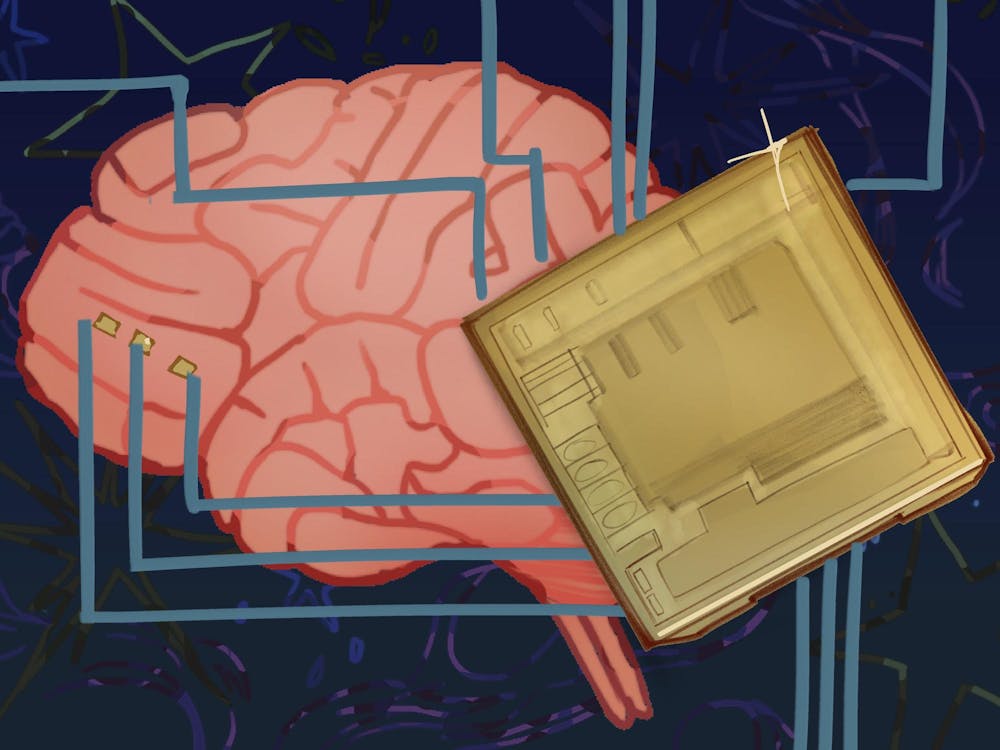Brown researchers developed an “asynchronous wireless network” for microelectronic chips to transmit and receive data from biomedical devices using a system that mimics how neurons in the brain communicate through electrical signals.
In a study published in on March 19, the researchers detailed how most commercially available spatially distributed radio frequency identification sensors, which are commonly abbreviated as RFID sensors, lack scalability.
RFID is a comprising tags, which send information, and readers, which receive data sent from the tag. RFID sensors are used for a variety of purposes in the medical sector, including data logging for patients and biomedical devices. In spatially distributed systems, multiple RFID sensors located at different locations in a device can each collect and send data simultaneously, providing a real-time dataset that is able to gather crucial health information — for instance, signals from the human brain — more holistically. But while a few sensors can communicate with each other easily, scaling the system to allow for hundreds or thousands of spatially distributed sensors to collect intelligible data is a bigger challenge — one that the Brown researchers hope they might have gotten closer to overcoming.
“The wireless Brain-Computer Interface Group at Brown is working to create a network of thousands of neural sensors, which can eventually provide real clinical benefits to patients with a variety of neurological and physical disorders,” Lawrence Larson, a professor of engineering and co-author of the paper, wrote in an email to The Herald.
But efforts to scale these systems may run into issues if implanted in a living being. “Communicating all of this incredibly rich data from the neural sensors in the brain to a nearby computer is a daunting task, equivalent in many ways to building an entire metropolitan cellular phone network at the scale of the human body,” he added.
Larson wrote that the paper has developed “an innovative new approach” to transmitting data in both an efficient and practical manner, utilizing “the unique characteristic of neural signals” that will allow the researchers to scale the neural sensors to clinically significant levels.
“Usually, with the conventional communication method, the neurons just send out all the data regardless of the data content, whether it’s important or not,” said Jihun Lee PhD’21, a postdoctoral research fellow and one of the lead authors of the paper. “So we have developed a way to only transmit meaningful information.”
Lee added that they developed a new method that could mimic a “binary action potential” — or an electrical signal triggered once a threshold is met — that neurons generate. This action potential would only be generated for information the chip deems important.
“The size (of the chips) is very tiny,” said Ah-Hyoung Lee, a postdoctoral researcher and the other lead author of the paper. “It is 300 micrometers by 300 micrometers, a bit larger than a hair’s thickness.” The small size of the microelectronic chips allows for a range of opportunities in a clinical setting, including the potential for it to be used in medical implants, according to the paper.
The overall research process was “very straightforward,” according to Jihun Lee. “We have been thinking about this concept for a long time … It just took a bit of effort and time,” he said.
Inserting chips into humans also raises a host of ethical questions surrounding data collection and consent in biomedical implants. The research team is not looking toward clinical trials yet.
“This is future technology, and we are making a basis for that technology — the preliminary steps,” he said, adding that the technology would likely be tested on other animals first, such as rodents, and the prospects of human testing are “far, far away.”
Looking at the next steps, the team hopes to “extend these devices into clinically relevant scales and technologies in the years ahead,” Larson added.
Claire Song is a Senior Staff Writer covering science & research. She is a freshman from California studying Applied Math-Biology. She likes to drink boba in her free time.




